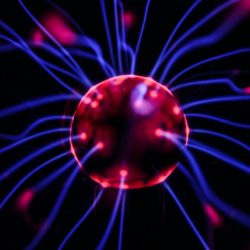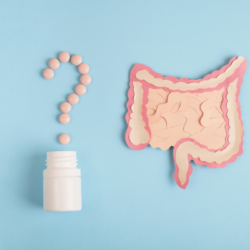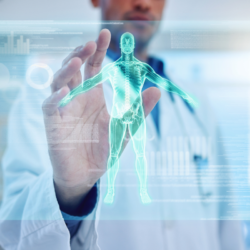PMS is a collection of somatic, emotional and behavioral symptoms. These symptoms appear before your period and go away with it. This symptom set affects approximately 75% of women of childbearing age. The specificity of this syndrome is in fact its cyclicity, and its intensity severe enough to significantly alter personal, social and professional functioning.
What is PMS
PMS is a recurring luteal phase disorder characterized by irritability, anxiety, emotional lability, depression , edema, breast pain, and headache that occurs during the 7-10 days before the cycle and usually ending a few hours after the onset of menstruation.
The mechanisms of this disorder seem to be linked to the drop in sex hormones in the blood after ovulation. Certain symptoms (breast tension, weight gain) can be explained in particular by water retention .
What are the factors favoring premenstrual syndrome?
- Multiple hormonal factors:
- Hypoglycemia
- Other changes in carbohydrate metabolism
- Hyperprolactinemia
- Fluctuating circulating estrogen and progesterone levels
- Abnormal responses to estrogen and progesterone
- Excessive aldosterone or ADH levels
- A genetic predisposition
- Serotonin deficiency
- Possibly magnesium and calcium deficiencies
Estrogen and progesterone can cause transient fluid retention, as can excess aldosterone or DHA.
A little history
The first mention of a disease called “premenstrual tension” was documented in 1931 in an article by US gynecologist Robert T. Frank. We can however go back a little further to observe the premises both of the interest in the premenstrual phase , but also of the association between psychic weakness and menstruation. According to Fischer-Homberger , the connection of something that could be described as “nervous weakness” with menstruation did not appear until the end of the 19th century. In this model, the “irritability” of certain organs, such as the ovaries in the case of hysteria, combined with a more general irritability of the nervous system, causes the “attacks”.
Fischer Homberger thus notes that, at this time which precedes the “discovery” of the sex hormones, the nervous system is seen as the center of the process of menstruation . This is thus “a state analogous to hysterical attacks, a kind of hysteria.” At the start of the 20th century, the emergence of endocrinology meant a loss of importance in the association between menstruation and the nervous system, in favor of hormones. The endocrinological model, however, makes it possible to firmly establish the link between psychic symptoms and the premenstrual period, since it makes it possible to explain “complaints concerning any part of the body at any time during the menstrual cycle”, as noted. Stolberg. It was after World War II, however, that the term “premenstrual tension” became popular and explicitly referred to the mix of emotional , behavioral and somatic symptoms that Frank had already put forward.
In 1953, the British doctors Katharina Dalton and Raymond Greene , in an article published in the British Medical Journal , proposed the term “premenstrual syndrome”.
Premenstrual syndrome thus experienced a new stage in its history from the beginning of the 1980s, with the development of a new diagnostic category, premenstrual dysphoric disorder .
Breast pain related to premenstrual syndrome
Feeling tension in the breasts during the days before menstruation can be considered a normal physiological phenomenon. We speak of mastodynia when this sensation becomes uncomfortable and pushes the patient to consult. This pain is most often due to the fluid retention that accompanies the drop in blood levels of sex hormones after ovulation.
Depending on the age of the patient, there are two types of breast pain. Young girl’s mastodynia accompanies the first menstruation , while in women 40 years of age and over, mastodynia can have more serious causes and be accompanied by mastosis (the presence of fibrous cysts in the breasts). Taking into account the age of the patients, the clinical examination must be meticulous in order to detect a possible tumor.
What food supplements are there to fight against PMS?
Ω6 fatty acids :
Gamma-linolenic acid, often included in food supplements, relieves PMS . The borage and evening primrose , rich in omega-6 fatty acids, are also proposed.
Calcium :
However, several studies have suggested that calcium intake would be effective in relieving PMS. Be careful, taking calcium in large quantities (more than 5,000 mg per day) could cause kidney stones in some people. In addition, calcium dietary supplements must be taken away from antibiotics of the family of cyclins and quinolones, and thyroid hormones.
Magnesium :
Several studies have suggested that magnesium may act on period pain and PMS symptoms. A recent study further suggests that a combined intake of magnesium and vitamin B6 would be more effective than taking these two substances alone.
Be careful, however, supplements rich in magnesium should be avoided in cases of kidney failure. Like calcium, magnesium should not be taken at the same time as antibiotics of the cyclin and quinolone family.
What about medicinal plants?
The Chaste tree :
Chasteberry has hormonal activity with an overall improvement in the hormonal cycle and a reduction in PMS symptoms. Chasteberry acts as an agonist of the μ opioid receptors. It mimics the action of β-endorphin, normalizes the pulsatile secretion of GnRh, a hypothalamic hormone which controls the secretion of the pituitary gonadotropins LH and FSH. In fact, it modulates the pulsatile release of these gonadotropins (anti-FSH action).
In addition to the frenetic action of prolactin and the central dopaminergic action which would explain the activity of chaste tree on the psychic, motor and somatic aspects of premenstrual syndrome, the plant is also anti-estrogen, anti-androgen, and causes a rise in blood pressure. mid-cycle progesterone concentrations .
In fact, chaste tree limits the appearance of symptoms linked to premenstrual syndrome (mastodynia, migraines, etc.). In this context, it exerts a sedative and anxiolytic effect.
Chasteberry is also an emmenagogue: it regulates the menstrual cycle by stimulating and facilitating menstrual blood flow in the pelvic region and the uterus. It corrects cycle abnormalities and restores the phases of the menstrual cycle related to luteal insufficiency and latent hyperprolactinemia.
Be careful, chaste tree could interact with certain drugs, in particular oral contraceptives, or “pill”. Any hormonal treatment requires a minimum of 3 months before any result due to the follicular maturation time of 90 days.
The Lady’s Mantle :
Yarrow is used to treat climacteric disorders of menopause . In premenopausal women, it helps to regulate the menstrual cycle by stimulating menstrual blood flow in the pelvic region and the uterus (emmenagogue effect), which corresponds to its traditional use, especially in premenstrual syndrome. Its clinical effect is progestogen and anti-estrogen , in relation to its apigenin concentration.
The stigmas of Saffron :
The main therapeutic indications of saffron in relation to its activities on the central nervous system are mood disorders as well as painful manifestations in the context of premenstrual syndrome.
Ginkgo :
By their action on the blood circulation, extracts of ginkgo leaves could effectively relieve breast pain associated with premenstrual syndrome.
Medical bibliographic sources and clinical trials :
- Vidal, premenstrual syndrome, 2014
- Lanza di Scalea T, Pearlstein T: Premenstrual dysphoric disorder. Med Clin North Am, 2019
- BAS, Halid (2006). “Prämenstruelles Syndrom” in Ars Medici, 2006
- BASS, Barbara Francesca (2011). “Prämenstruelles Syndrom: Vielen Frauen kann ohne Hormone geholfen werden” in Hausarzt Praxis, 2011
- WUNDER-GALIE, Dorothea (2010). “Prämenstruelles Syndrom bei Adoleszentinnen: Vorkommen, Differenzialdiagnostik und therapeutische Möglichkeiten” in Ars Medici, 2010
- Loch EG, Selle H, Boblitz N. Treatment of premenstrual syndrome with a phytopharmaceutical formulation containing Vitex agnus castus. J Womens Health Gend Based Med. 2000
- Webster DE et al., Activatin of the mu-opiate receptor by Vitex agnus-castus methanol extracts; implacation for its use in PMS, J Ethnopharmacol., 2006
- Atmaca M. et al., Fluoxetine versus Vitex agnus castus extract in the treatment of prementrual dysphoric disorder, Hum Psychopharmacol., 2003
- Milewizcz A. et al., Vitex agnus castus extract in the treatment of luteal phase defects due to latent hyperprolactinemia. Results of a randomized placebo-controlled double-blind study, Arzneimittelforschung, 1993





